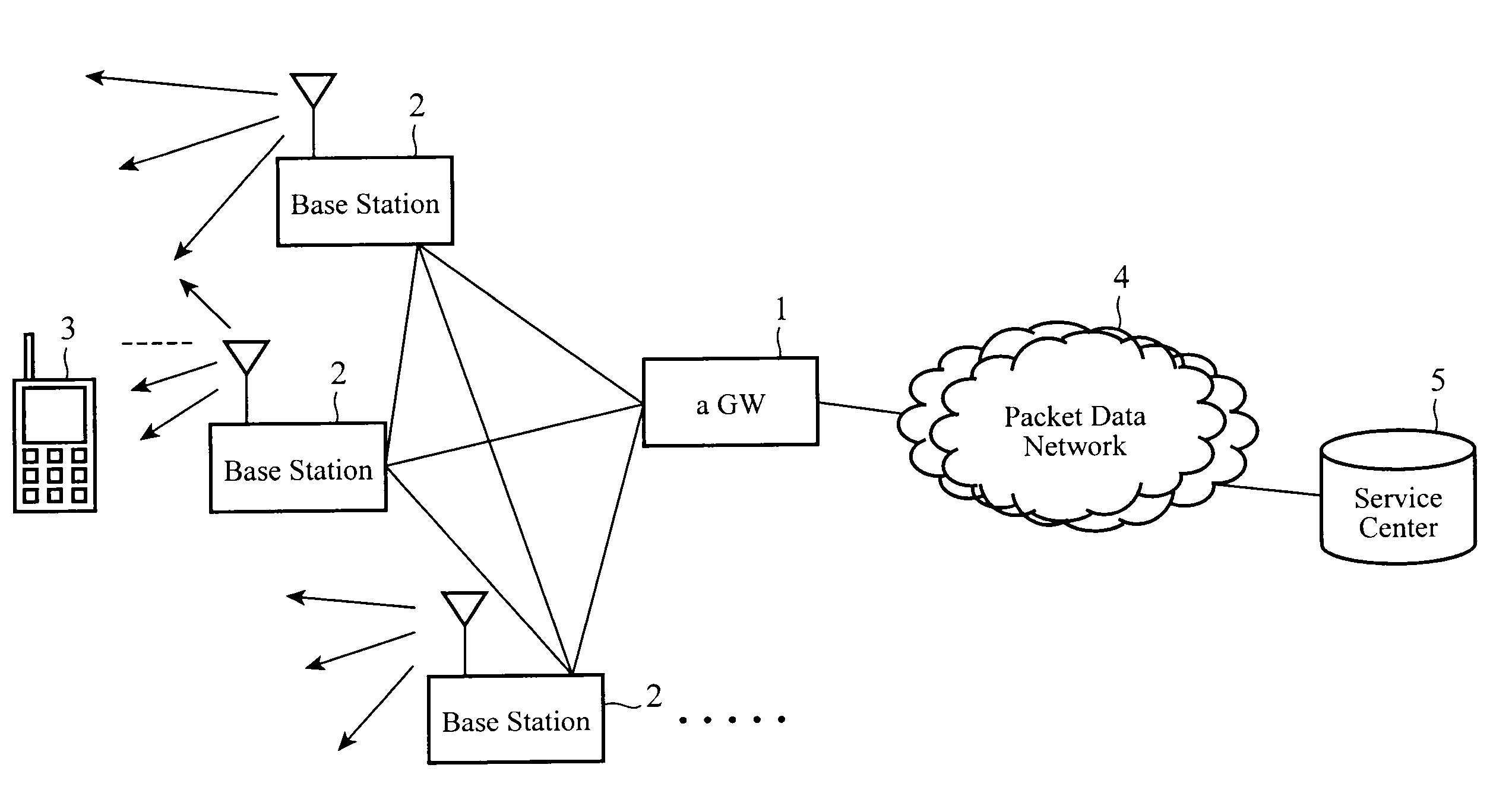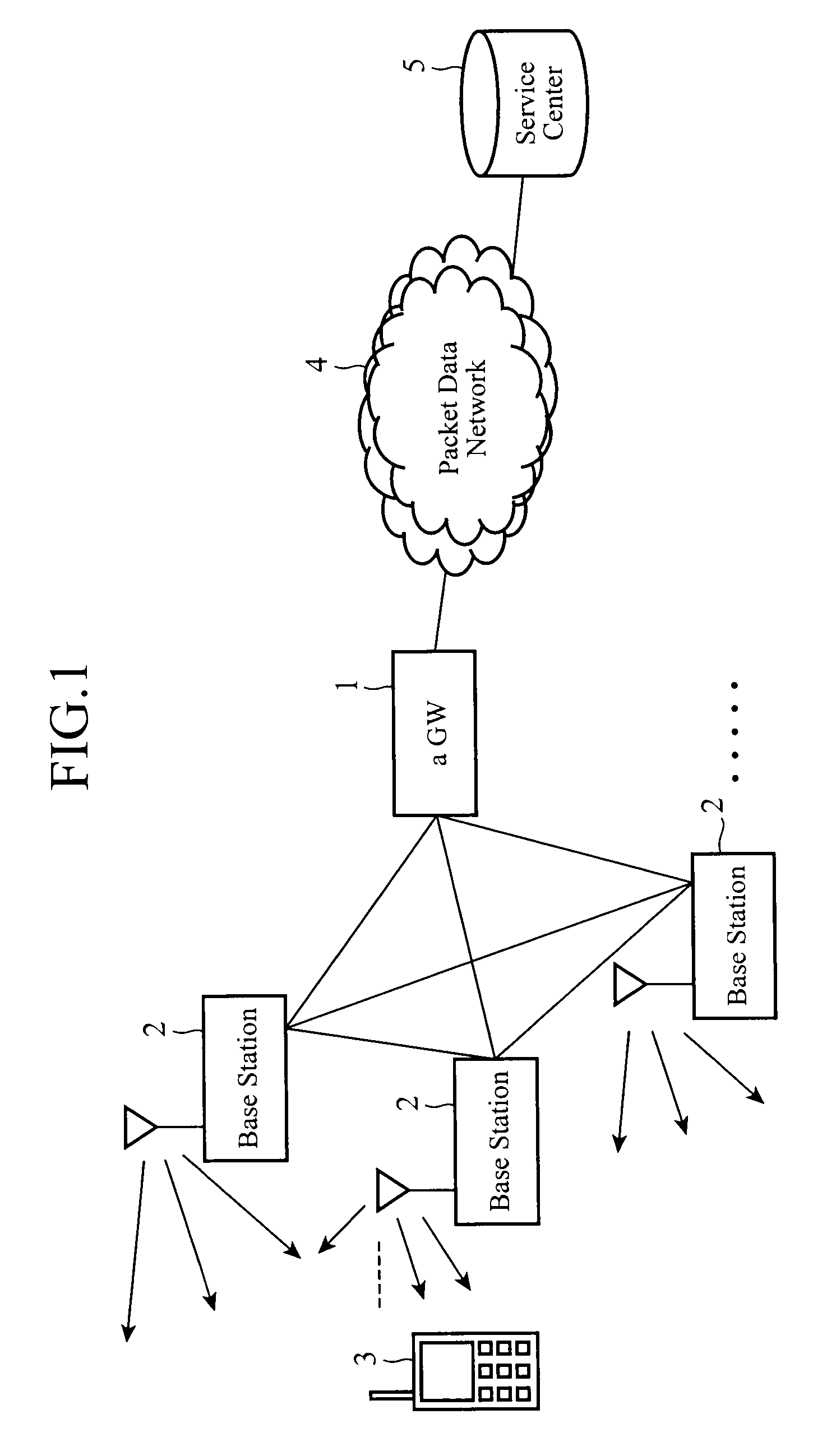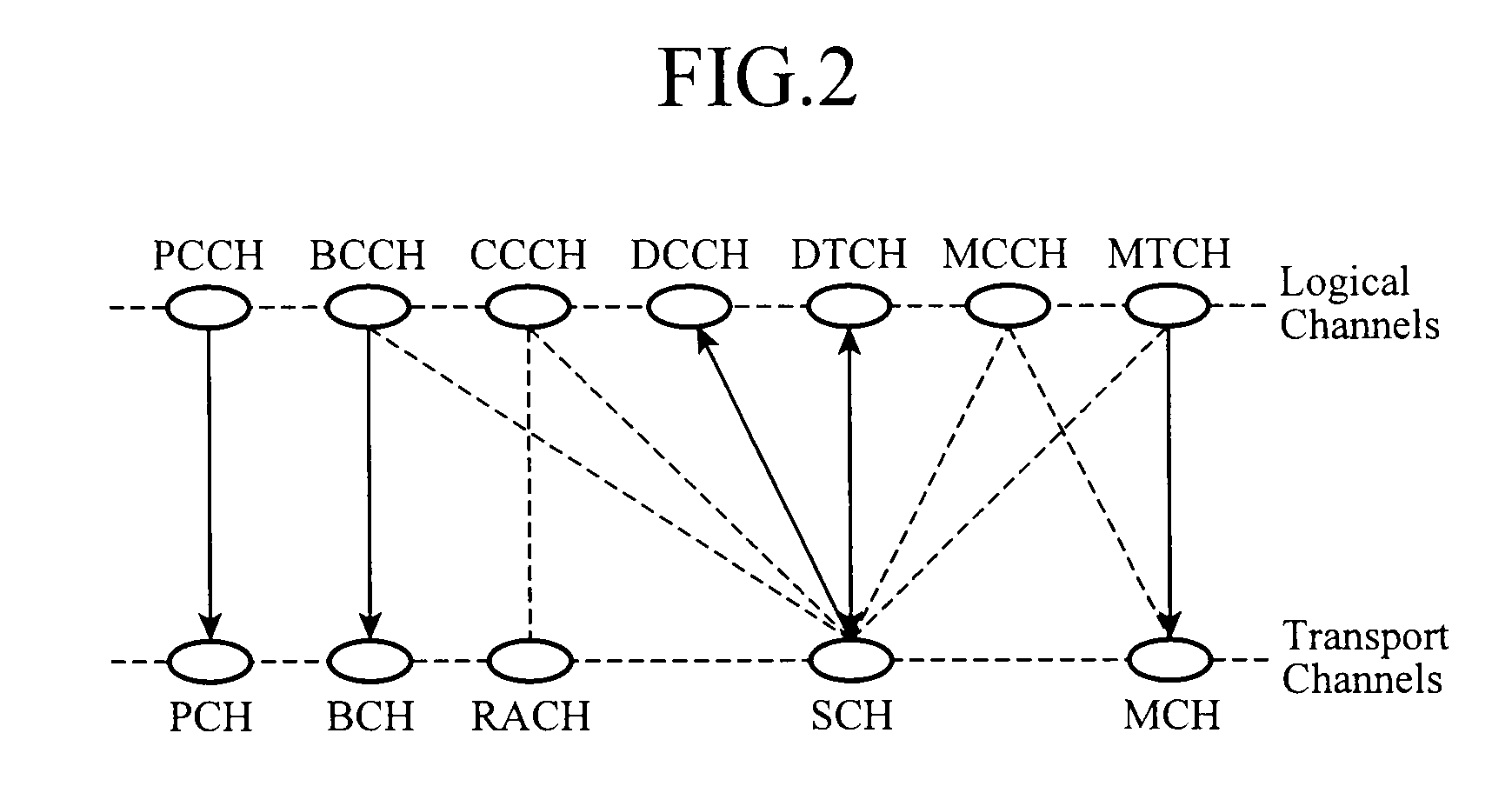Data communication method, communication system and mobile terminal
a data communication and mobile terminal technology, applied in the field of communication systems, can solve the problems of signal interference wave to other mobile terminals, narrow cell coverage, increased etc., and achieve the effect of widening the cell coverage, reducing power consumption of mobile terminals, and reducing papr
- Summary
- Abstract
- Description
- Claims
- Application Information
AI Technical Summary
Benefits of technology
Problems solved by technology
Method used
Image
Examples
embodiment 1
[0131]FIG. 1 is an explanatory drawing showing the structure of a mobile communication system which complies with LTE. In FIG. 1, an aGW 1 performs transmission and reception of control data and user data with a plurality of base stations (eNodeB) 2, and a base station 2 transmits and receives data to and from a plurality of mobile terminals 3. Between a base station 2 and a mobile terminal 3, broadcast information, information used for processing a call, individual control data, individual user data, control data for E-MBMS, user data, and so on are transmitted. It has also been studied that base stations 2 communicate with each other.
[0132]A base station 2 has uplink and downlink schedulers. These schedulers of a base station 2 enable transmission and reception of data between the base station 2 and each mobile terminal 3, and carry out scheduling for improvements in the throughput of each mobile terminal 3 and that of the whole mobile communication system.
[0133]A E-MBMS provides ...
embodiment 2
[0186]In above-mentioned Embodiment 1, in a case in which a mobile terminal transmits an uplink scheduling request signal SR by using an S-RACH while transmitting an Ack / Nack signal and / or a CQI signal by using an Ack / Nack exclusive channel, the mobile terminal stops the transmission of the Ack / Nack signal and / or the CQI signal while transmitting the uplink scheduling request signal SR.
[0187]By stopping the transmission of the Ack / Nack signal and / or the CQI signal while transmitting the uplink scheduling request signal SR, the mobile terminal does not have to use a multi carrier method with which to simultaneously transmit data associated with the two physical channels (the Ack / Nack exclusive channel and the S-RACH) which are allocated to two types of bands, respectively. Therefore, increase in the radio resources load on the communication system due to temporary increase in the physical channels can be prevented, and transmission with a single carrier method which guarantees a low ...
embodiment 3
[0225]In above-mentioned Embodiment 1, by stopping transmission of an Ack / Nack signal and / or a CQI signal while transmitting an uplink scheduling request signal SR by using an S-RACH, and by no using a multi carrier method with which to simultaneously transmit data associated with the two physical channels (the Ack / Nack exclusive channel and the S-RACH) which are allocated to two types of bands, respectively, increase in the radio resources load on the communication system due to temporary increase in the physical channels can be prevented, and transmission with a single carrier method which guarantees a low PAPR can be implemented.
[0226]In this Embodiment 3, a method of implementing transmission using an SC-FDMA method which implements a wider coverage and a lower PAPR (peak to average power ratio) by transmitting an Ack / Nack and / or a CQI and an uplink scheduling request signal SR by using an identical physical channel will be explained hereafter.
[0227]In accordance with this Embod...
PUM
 Login to View More
Login to View More Abstract
Description
Claims
Application Information
 Login to View More
Login to View More - R&D
- Intellectual Property
- Life Sciences
- Materials
- Tech Scout
- Unparalleled Data Quality
- Higher Quality Content
- 60% Fewer Hallucinations
Browse by: Latest US Patents, China's latest patents, Technical Efficacy Thesaurus, Application Domain, Technology Topic, Popular Technical Reports.
© 2025 PatSnap. All rights reserved.Legal|Privacy policy|Modern Slavery Act Transparency Statement|Sitemap|About US| Contact US: help@patsnap.com



